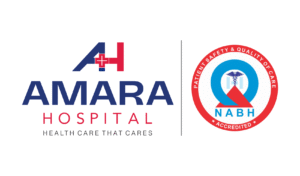













FOR MRI SERVICES
SPECIALTIES & SERVICES
Amara Hospital is a multi-specialty hospital that offers the best of both
worlds – finest healthcare practices and optimal affordability

Critical Care Medicine
At Amara, we provide specialized care to patients with life-threatening conditions who require comprehensive care and intensive monitoring.

Anesthesiology
The Department of Anesthesiology uses the most advanced, safe and patient-focused techniques in the delivery of anesthetic care.

Dermatology
Amara Hospital’s dermatology services cover the latest and most effective treatments and procedures in Skin and Hair care

General Medicine
The Department of General Medicine deals with the prevention, diagnosis and non-surgical treatment of various diseases.

Pediatrics
Our team will manage the overall physical and behavioral health of your child, including routine checkups, immunization and treating illnesses.

Preventive & Lifestyle Medicine
We aim to proactively prevent disorders through diagnostic screening and also offer counselling to inculcate healthy habits.

Dental Medicine
We promise you a comfortable and pain free experience during your treatment.

Orthopedics
The Department provides state-of-the-art treatment in all fields of Orthopedic Surgery for adults and children.

Spine Orthopedics
The Spine Care team at Amara is dedicated to handling the complete spectrum of spine ailments of all age groups.

Cardiology
AMARA Cardio is a dedicated team of Cardiology, Cardiothoracic Surgery, Emergency Medicine and Critical Care doctors, providing round the clock cardiac services.

ABOUT AMARA HOSPITAL
Varaprasad and Ramadevi Gourineni are an NRI doctor couple who share a great passion for patient care and teaching. They returned to India with a commitment to provide service to their hometown and to provide learning/employment opportunities for young professionals in Rayalaseema.
Amara Hospital will be a multi-specialty, one-stop solution for all of our patients’ healthcare needs. We will focus on both Primary and Specialty care. We aim to provide health care with international standards at affordable prices. Both national and international faculty will be visiting to practice and teach at this institute.
We Are Empanelled With :

Dr. NTR
Vaidya Seva Trust

Employee Health
Scheme (EHS)

BSNL
MOUs done with :

IIT - Tirupati

AAI

CISF

NARL

SHAR

NSU
Our Reviews
Trustindex verifies that the original source of the review is Google. Very good hospitalatyTrustindex verifies that the original source of the review is Google. Very good hospitalityTrustindex verifies that the original source of the review is Google. I took preventive health check up in Amara hospital,very good package for all patients,I recommended to all for health checkup package ,premium is very good ,staff guidance also friendly,experience with doctors also nice ,thank you Amara for providing this helathcheckupTrustindex verifies that the original source of the review is Google. Amara hospital lo dr anand sir mariyu dr yaswanth sir chaala baga treat chesaru Vaalla dhaggara staff kuda chaala baga receive cheskunnaru Ma vadhinaki sir dhaggara treatment ippinchamu , ippudu aame chaala bagundhi Doctors inkaa valla dhaggara staff chaala baga treat chesaru, Doctors ki inka amara hospital ki chaala thanks.Trustindex verifies that the original source of the review is Google. Dr Anand sir & dr yaswanth sir na wife ki unna problem ki chala bags treat chesaru Amara hospital lo staff Chalabaga treat chesaru Thanks to dr Annand sir and dr yaswanth sir and thanks to amara hospitalTrustindex verifies that the original source of the review is Google. Excellent guidance by the junior staff. Very good hospitality by the staff . Senior doctors are very patience .Trustindex verifies that the original source of the review is Google. I'm mr Sudharshan and my wife Mrs charisha who had diagnosed with brain TB in manipal hospital , from there we get reference to Amara hospital to Dr Anand sir and Dr yashwanth sir, as a team they treated her well only with medications without surgery, after 1 and half year she get complete recovery. she doing well now thanks to Amara hospital and thanks to neurosurgery doctors dr Anand sir and Dr yashwanth sir. thank you so muchTrustindex verifies that the original source of the review is Google. My father Mr Eshwaraiah had underwent lumbar spine surgery in Amara hospital by Dr anand vk and dr yashwanth sandeep. S, He is very fine now and doing good Thanks to amara and dr anand &dr yashwanth sandeep sirTrustindex verifies that the original source of the review is Google. All very good service in health check helpfull service
Outreach Clinics
Address:
Lifeline Hospital, Kadapa
Door no:21 460, Palem Papaiah Street, Seven Roads Circle, Kadapa, Andhra Pradesh 516001
Timings:
Every Month 2nd Saturday, From 10am to 2pm
For appointment: +91 9550031833 / 7993932777
Email:
appointments@amarahospital.com
SISA HOSPITAL
6-3-252/B/8, Lane Opp: More Mega Store
Eramanzil, Punjagutta,
Hyderabad, Telangana 500004
Timings:
June 9th 2025 from 10am to 2pm.
For appointment : +91 – 9066462996 / 9066362996
Email:
appointments@amarahospital.com





